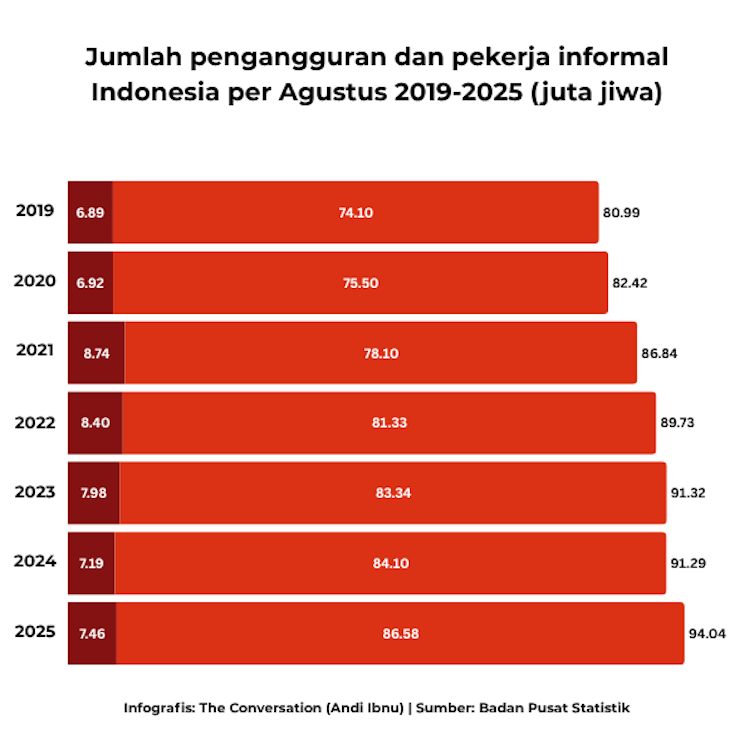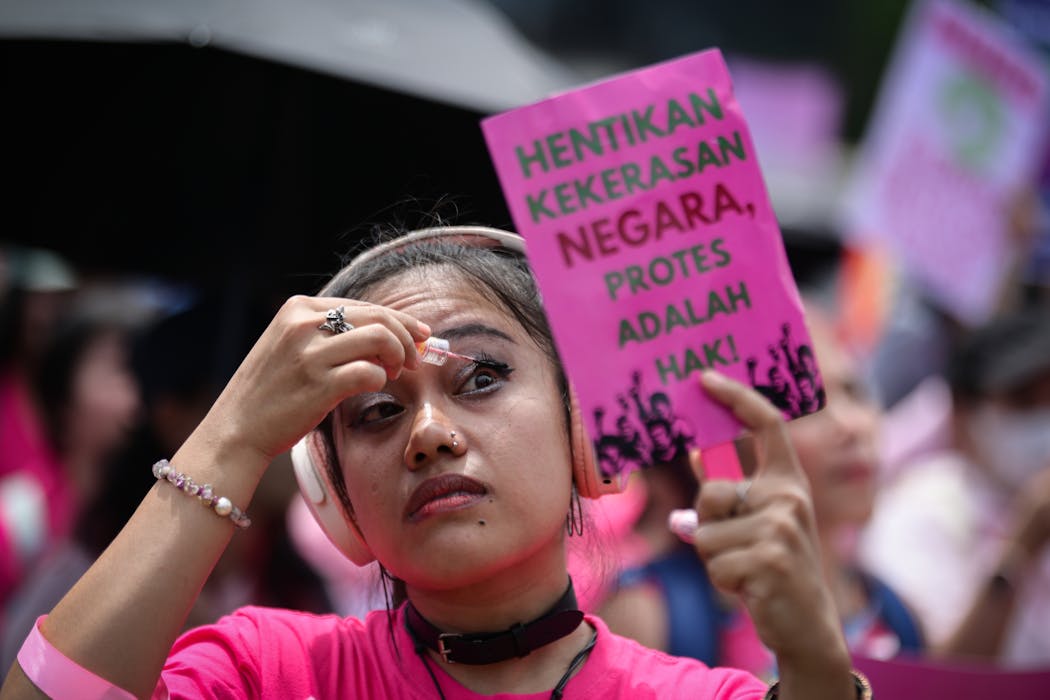Ahmaud Arbery murderers sentenced to life in prison: 4 essential reads on the case
- Written by Matt Williams, Breaking News Editor

Two of the three men convicted of murdering unarmed Black jogger Ahmaud Arbery learned on Jan. 7, 2021, that they will likely die behind bars[1].
Gregory McMichael and his son Travis McMichael were sentenced to life in prison without parole at a hearing in Glynn County, Georgia. A third man, William Bryan, was sentenced to life in prison with parole. He must serve a minimum of 30 years behind bars before he is eligible.
All three were found guilty on Nov. 24, 2021[2], of murder in a case that gained widespread attention during a national reckoning over the killing of unarmed Black men in the U.S.
Arbery, a 25-year-old Black man, was killed on Feb. 23, 2020[3], after being pursued through the predominantly white suburban neighborhood of Satilla Shores[4], near Brunswick in Georgia.
For many, the manner of his death raised questions over the role race played in the killing, evoking a U.S. past in which gangs of white men killed Black men and boys[5] with impunity. But race played a backseat role[6] in the trial, being brought up only in the prosecutor’s closing argument[7]. Instead, the nearly all-white jury[8] – 11 of the 12 jurors were white – was invited to focus more on whether the defendants were justified in trying to apprehend[9] Arbery as he jogged down the road.
The Conversation U.S.‘s authors have explored how race and law intertwine in the following stories related to Arbery’s murder.
1. The use and abuse of citizen’s arrest
In the course of a two-week trial, jurors heard evidence from more than two dozen witnesses[10]. At the heart of the defense was a claim that the three men accused were protected by the state’s citizen’s arrest[11] law.
Superior Court Judge Timothy Walmsley made a point of explaining[12] the law in his final instructions before the jury retired to consider its verdict. He told them citizen’s arrests can be made only if a crime has taken place in the presence of the person making the arrest, “or within his immediate knowledge.”
The verdict in the case suggests jurors sided with the prosecution’s view that the citizen’s arrest defense did not hold water.
Following the death of Arbery, Georgia weakened its 150-year-old citizen’s arrest law[13]. But as explained by Seth Stoughton, professor of law at University of South Carolina[14], many states retain similar legislation. In fact, citizen’s arrest laws have been around for centuries – but they have often been open to abuse. Such laws can be “badly misused by those who believe their higher social status gives them authority over someone they perceive as having lower status.”
“Frequently, this falls along racial lines,” Stoughton adds.
Read more: Trial of Ahmaud Arbery’s accused killers will scrutinize the use – and abuse – of ‘outdated’ citizen’s arrest laws[15]
2. Criminalizing Black joggers
Lawyers for the three defendants claimed in the trial that the accused men were within their right to conduct a citizen’s arrest because they believed Arbery had committed a burglary[16] despite there being no evidence to suggest that the 25-year-old had stolen anything.
Sociologist Rashawn Ray[17] focused on the setting and circumstances surrounding the shooting[18] – that the victim was a Black man jogging in a white suburban neighborhood.
In Ray’s study of race and physical exercise[19], he found that Black men living in white neighborhoods were far less likely to go for a run in the areas surrounding their home than were white men, white women or Black women. The reason? “Black men are often criminalized in public spaces – that means they are perceived as potential threats and predators,” Ray writes.
Black joggers interviewed as part of Ray’s research reported having the police called on them, seeing neighbors cross the street as they approached and shutting screen doors as they passed.
“For Black men, this means that negative perceptions about their propensity to commit crime, emotional stability, aggressiveness and strength can be used as justification for others to enact physical force upon them,” Ray concludes.
Read more: The killing of Ahmaud Arbery highlights the danger of jogging while Black[20]
3. Cellphone footage: Evidence or exploitation?
During the trial, jurors were shown the graphic footage depicting the last moments[21] of Arbery’s life. For some, it may not have been the first time they were seeing the grainy images.
Such videos have emerged in several recent deaths of Black men at the hands of police officers – or, in Arbery’s case, citizens.
To Allissa Richardson[22] at the USC Annenberg School for Communication and Journalism, the images that circulate are the modern-day equivalent of the grotesque photographs that accompanied the lynchings of the Jim Crow era.
Just as these images from the past serve a purpose today – to educate America about race relations in the U.S. – so too can the video images shot on bystanders’ cellphones. For example, they can be used as evidence in court.
But Richardson cautions that casual viewing[23] of Black people dying online and on TV can become exploitative.
“Likening the fatal footage of Ahmaud Arbery and George Floyd to lynching photographs invites us to treat them more thoughtfully. We can respect these images. We can handle them with care. In the quiet, final frames, we can share their last moments with them, if we choose to. We do not let them die alone.”
Read more: Why cellphone videos of Black people's deaths should be considered sacred, like lynching photographs[24]
4. Lessons
In all likelihood, Arbery would not be dead – and his murderers not facing life behind the bars – if it were not for the presence of a shotgun in the confrontation. That is one of the main lessons that Stanford law professor John Donohue[25] draws from the Arbery murder and subsequent trial.
Donohue also notes that during the trial, Travis McMichael testified that before the deadly confrontation with Arbery, there had been a number of burglaries in the area, and a Smith & Wesson pistol he owned was stolen from a truck in front of his house. “That gun and other guns stolen outside the home abundantly arm American criminals – to the tune of roughly 100,000 guns[26] per year. Even before McMichael murdered Arbery, he was already contributing to violent crime indirectly,” Donohue notes.
Editor’s note: this is an updated version of an article that was originally published[27] on Nov. 24, 2021.
References
- ^ they will likely die behind bars (www.cnn.com)
- ^ found guilty on Nov. 24, 2021 (www.washingtonpost.com)
- ^ was killed on Feb. 23, 2020 (www.bbc.com)
- ^ predominantly white suburban neighborhood of Satilla Shores (www.usatoday.com)
- ^ gangs of white men killed Black men and boys (lynchinginamerica.eji.org)
- ^ played a backseat role (www.nytimes.com)
- ^ prosecutor’s closing argument (www.nytimes.com)
- ^ nearly all-white jury (www.cnn.com)
- ^ justified in trying to apprehend (www.cbsnews.com)
- ^ more than two dozen witnesses (www.reuters.com)
- ^ protected by the state’s citizen’s arrest (www.nytimes.com)
- ^ made a point of explaining (www.reuters.com)
- ^ its 150-year-old citizen’s arrest law (www.npr.org)
- ^ professor of law at University of South Carolina (sc.edu)
- ^ Trial of Ahmaud Arbery’s accused killers will scrutinize the use – and abuse – of ‘outdated’ citizen’s arrest laws (theconversation.com)
- ^ they believed Arbery had committed a burglary (www.latimes.com)
- ^ Sociologist Rashawn Ray (socy.umd.edu)
- ^ setting and circumstances surrounding the shooting (theconversation.com)
- ^ study of race and physical exercise (doi.org)
- ^ The killing of Ahmaud Arbery highlights the danger of jogging while Black (theconversation.com)
- ^ graphic footage depicting the last moments (www.bbc.com)
- ^ Allissa Richardson (annenberg.usc.edu)
- ^ cautions that casual viewing (theconversation.com)
- ^ Why cellphone videos of Black people's deaths should be considered sacred, like lynching photographs (theconversation.com)
- ^ Stanford law professor John Donohue (law.stanford.edu)
- ^ tune of roughly 100,000 guns (works.bepress.com)
- ^ originally published (theconversation.com)
Authors: Matt Williams, Breaking News Editor





